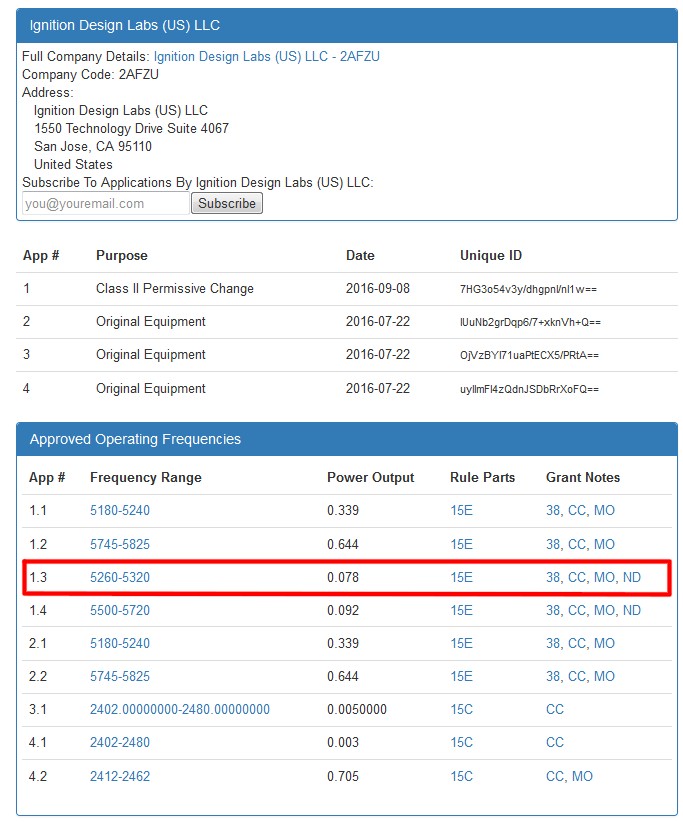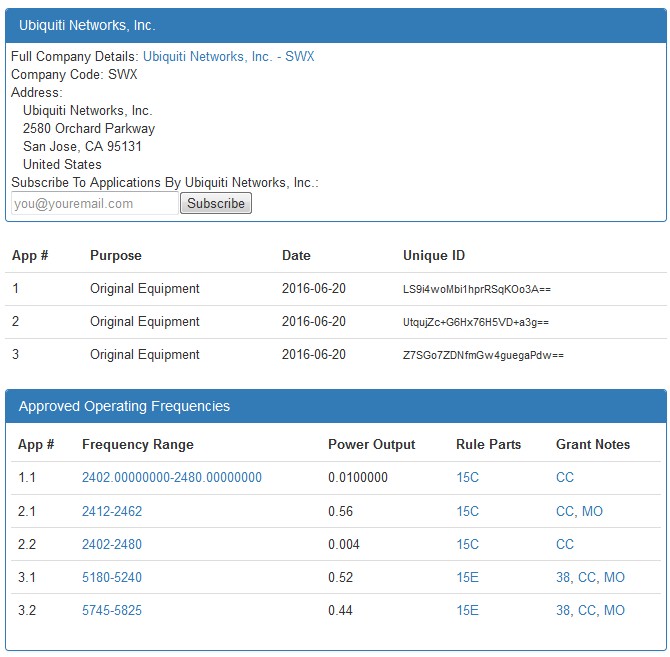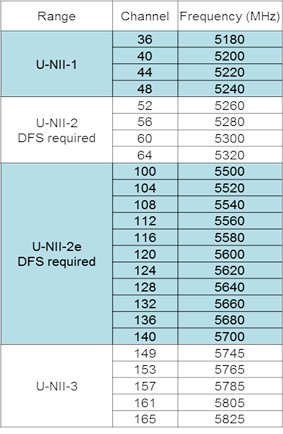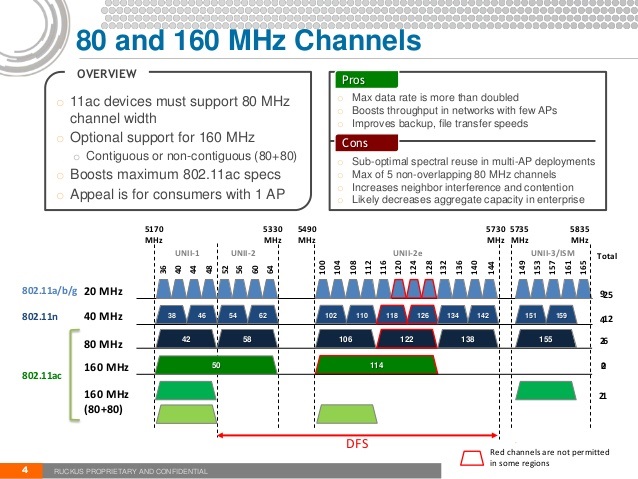Dynamic Frequency Selection (DFS) is becoming more important to getting good bandwidth from your Wi-Fi network. Here’s what you need to know.
1. What is DFS?
Dynamic Frequency Selection (DFS) are extensions to the 802.11 standard that specify mechanisms allowing Wi-Fi devices to use 5 GHz channels that are shared with radar systems. The mechanisms are designed to ensure that Wi-Fi networks and other devices operating in the unlicensed 5 GHz bands do not interfere with radar systems.
DFS was originally driven by European requirements, but has since become used worldwide.
2. What standards govern DFS?
The U.S. requirements originally were described in IEEE 802.11h, which references EU standard ETSI EN 301 893. The most current U.S. DFS requirements are described in the FCC’s report and order FCC-06-96A1 released on June 30, 2006.
3. Are Europe and the U.S. the only places where DFS rules apply?
No. Allowed channels for both 2.4 and 5 GHz band channels vary by country for both DFS and non-DFS channels. Wikipedia’s List of WLAN channels is a good reference to use.
4. What channels are affected by DFS?
DFS channels in the U.S. are shown in the graphic below. Channels in other regions are listed in Wikipedia’s List of WLAN channels.
5 GHz channels w/ DFS noted
(courtesy TP-Link)
5. DFS has been around for awhile. Why is this important now?
The short answer is 80 and 160 MHz 802.11ac channels are reducing the effective number of available channels in 5 GHz. The graphic below shows there are only two non-overlapping 80 MHz wide channels and no contiguous 160 MHz wide channels without using DFS channels.
80 and 160 MHz channels
(courtesy Ruckus Wireless)
When channels overlap, all devices share the same bandwidth, whether they are in your network or your neighbors’.
6. How can I tell if my router supports DFS channels?
First, most consumer Wi-Fi routers sold in the U.S. don’t support DFS channels. To make things more confusing, a router that doesn’t support DFS channels in the U.S. may support them in some other countries.
The first thing to check is the 5 GHz radio channel settings in your router’s administration interface. If you’re in the U.S. and you see channels other than 36, 40, 44, 48 and 149, 153, 157, 161 and 165, your router supports DFS channels.
To make things more confusing, some routers that do support DFS channels, do so only when set to Auto channel selection mode. So if you don’t see the above channels listed in the 5 GHz channel selector, you can try setting the channel to Auto, then checking the router status to see the channel selected.
If you know your device’s FCC ID, you can look it up.
- Go to https://fccid.io/
- Enter the FCC ID
- Look for supported frequency range of 5260 – 5320
Here’s an example of a product that supports DFS channels (Ignition Design Labs’ Portal)

DFS channels supported
And here is one that doesn’t (Ubiquiti Networks’ Amplifi router).

DFS channels not supported
7. Can I use a Wi-Fi scanning app to check for DFS channels?
Maybe. But not all dual-band devices support DFS channels, even if the app you are using does. Unfortunately, this puts you in a Catch-22, because the quickest way to check if a device supports DFS channels is to check it with a router that does. Fortunately, you can also look up your device’s FCC ID number as described above.
8. Yay! My router supports DFS. I’m all set, right?
Not quite. Any router using DFS channels must be capable of avoiding interference with radar systems. This means:
- Verifying a channel is free of radar before using it (Channel Availability Check [CAC])
- Monitoring for radar once a channel is in use and quickly vacating the channel if radar is detected (Channel Move Time)
- Leaving a “radar” channel unused for a specific time period (Non Occupancy Period)
The table below details the timing requirements for the U.S. (FCC) and EU (EN 301 893).
| Parameter | FCC | EU |
|---|---|---|
| Non Occupancy Period | At least 30 minutes | |
| Channel Availability Check (CAC) time | At least 60 seconds (Canada & Australia require 10 minute CAC for the 5600-5650 MHz sub-band) |
|
| Channel Move Time | No more than 10 seconds | |
| In Service Monitoring | Continuously | |
Table 1: DFS timing requirements
What all this means is that a router supporting DFS has to scan for radar signals for at least 60 seconds before using a channel. It then must continuously look for radar during normal operation. In Service Monitoring is accomplished using a combination of Wi-Fi MAC/PHY and host driver processing. The MAC/PHY hardware and firmware detects radar signatures but requires some host processing to determine whether real radar has been detected and maintain detection history.
If radar is detected, it must stop using the channel within 10 seconds and not attempt to use it again for at least 30 minutes. Note that if the router wants to switch to another channel, it must first complete the one minute Channel Availability Check on that channel.
These requirements can severely limit DFS’ usefulness, particularly in areas with high radar activity.
9. Where can I learn more about DFS technical requirements?
Test house National Technical Systems has two helpful references:
- DFS Webinar (January 2007 slides)
- Dynamic Frequency Selection (DFS) and the 5GHz Unlicensed Band (October 2010 article)


